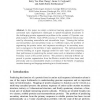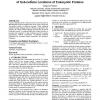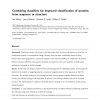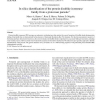233 search results - page 24 / 47 » A Tree-Decomposition Approach to Protein Structure Predictio... |
ISMIS
2005
Springer
15 years 5 months ago
2005
Springer
In this paper, we adapt a statistical learning approach, inspired by automated topic segmentation techniques in speech-recognized documents to the challenging protein segmentation ...
100
click to vote
GECCO
2008
Springer
15 years 26 days ago
2008
Springer
A genetic algorithm (GA) is utilised to discover known and novel PROSITE-like sequence templates that can be used to classify the sub-cellular location of eukaryotic proteins. Whi...
BMCBI
2008
14 years 12 months ago
2008
Background: Predicting a protein's structural or functional class from its amino acid sequence or structure is a fundamental problem in computational biology. Recently, there...
CANDC
2008
ACM
14 years 12 months ago
2008
ACM
Protein disulfide isomerase (PDI) enzymes are eukaryotic oxidoreductases that catalyze the correct formation of disulfide bonds during protein folding. Structurally they are chara...
119
click to vote
BMCBI
2007
14 years 11 months ago
2007
Background: Protein remote homology detection is a central problem in computational biology. Most recent methods train support vector machines to discriminate between related and ...




